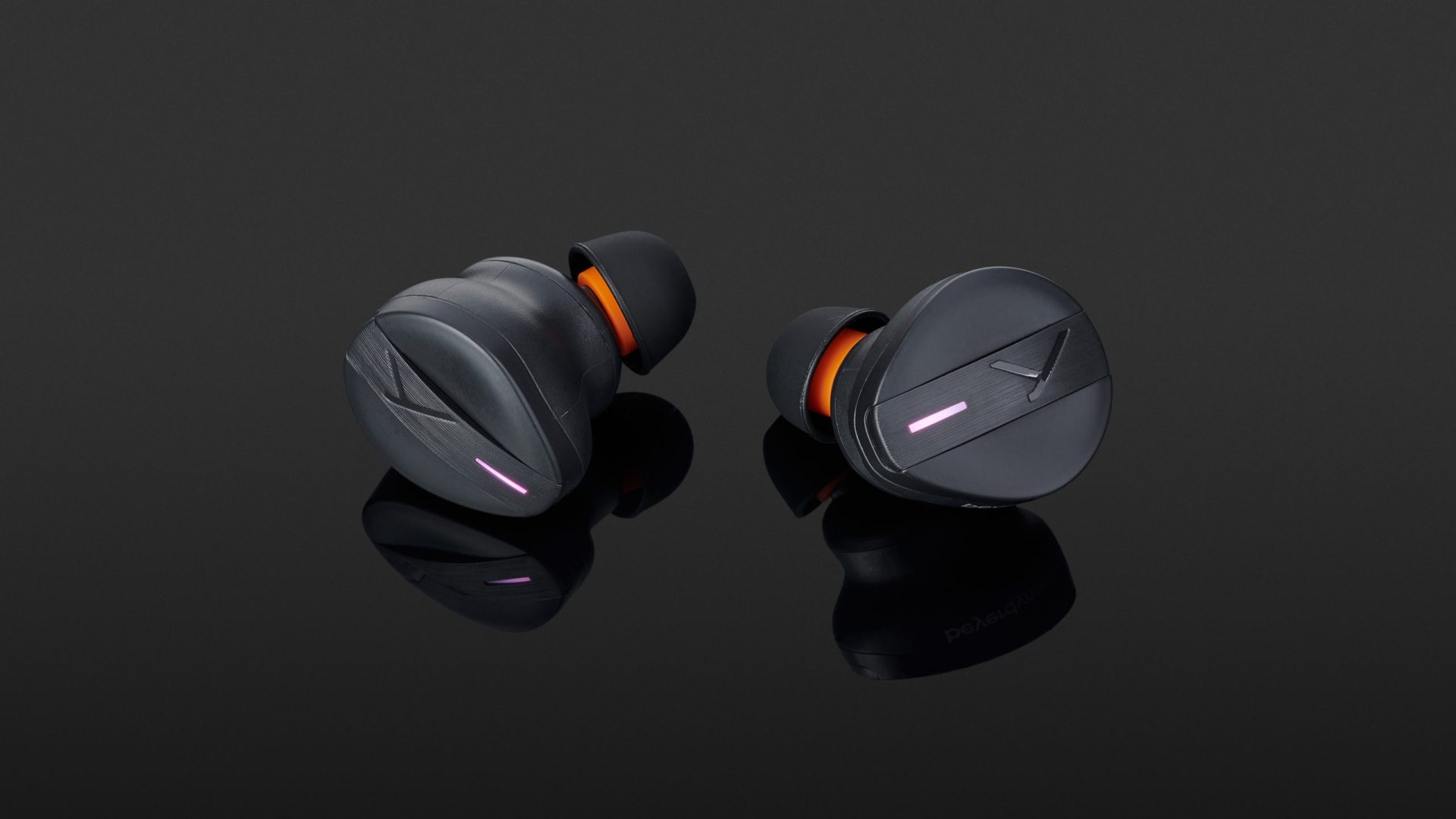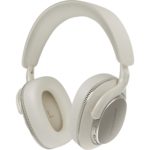With the Beyerdynamic Free Byrd, the manufacturer celebrates its successful debut in the True Wireless in-ear market. These headphones hardly make any mistakes: their sound can be customised thanks to Mimi personalisation, aptX Adaptive delivers sound quality of up to 24 bits and 48 kHz, and Gaming Mode reduces latency so that the image-sound offset is not a problem. It is a pity, however, that Multipoint is missing, and the touch assignment and equaliser cannot be freely configured.
The noise cancelling and the transparency mode in the price category of around 230 euros lags a bit behind the competition from Sony or Apple: but if you can live with the above-mentioned limitations, the Beyerdynamic Free Byrd headphones are an all-round success.
Good sound thanks to sound personalisation, effective noise cancellation (ANC) and sound quality of up to 24 bits and 48kHz: the true-wireless debut from the Heilbronn-based audio specialists Beyerdynamic has succeeded with the Free Byrd.
With the Byrd model series (to an overview), Beyerdynamic has had small and lightweight in-ears in its range for several years. All these models have a cable between the two ear tips as a common feature. With the Free Byrd, Beyerdynamic now wants to live up to the name and cut all cables: the first true-wireless model from the Heilbronn-based company wants to make us free as a bird. We test how well it works.
Package
It’s rare to see a package like this, even from far more expensive True Wireless in-ears: five pairs of silicone earpieces in different sizes and three pairs made of memory foam leave hardly anything to be desired in terms of “fit”. In addition, there’s a USB-C to -A charging cable with a plug angled on one side as well as – of course – the in-ears, the charging case and the usual documents.
Comfort
Thanks to the many EarTips, the Beyerdynamic Free Byrd fit securely in the ears and seals the ear canal perfectly – especially with the help of foam plugs. The passive noise suppression of the IPX4-certified ear tips is correspondingly high and, therefore, very good. However, due to their design, the in-ears do not look quite as delicate as the other Byrd models and protrude somewhat from the ears.
Bluetooth
Open the charging case, tap and hold twice – and the Beyerdynamic Free Byrd connect to a smartphone. If you have a reasonably up-to-date Android, you will be happy with the Google Fast Pair compatibility, which means that a pop-up with a picture of the headphones greets you on the screen. All you have to do is press “Connect”, and the pairing is complete. This is very reminiscent of Apple and their setup procedure, but here it’s the other way around. If you want to pair the Free Byrd with iOS, you have to do it in the system settings under “Bluetooth” – in the old-fashioned way.
The current Bluetooth version 5.2 and codecs SBC, AAC, aptX and aptX Adaptive not only guarantee an interference-free range but also offer low latencies and sound quality of up to 24 bits and 48kHz. In our practical test, the Bluetooth stream remained stable up to 13 metres inside an apartment (with a wall in between), and we achieved a good 30 metres in open space.
These in-ears support single mode by simply parking one earphone in the case. There is also the useful auto-pause feature, which stops playback when the in-ears are removed and resumes when they are reinserted. The Beyerdynamic Free Byrd does not support multipoint, i.e. simultaneous connection with several players. However, the headphones can remember up to six devices and automatically connect to one of them if it is within range.
Battery life
The Beyerdynamic Free Byrd runs for a long time: the manufacturer claims a full eleven hours with noise cancelling activated, but we can’t quite confirm that from our practical test. We managed 10.5 hours at high volume, which was still a very good value. Thanks to Fast Charge, a ten-minute quick charge provides up to 70 minutes of listening pleasure. The charging case extends the battery life of the in-ears to about 30 hours. The charging case itself can be charged either via USB-C or via an inductive Qi charging pad.
Control
The Beyerdynamic Free Byrd is operated by touch. Commands are reliably executed with a delay of about 1.4 seconds. In addition to the usual options such as play, pause, track forward and back, activating voice assistants or switching noise cancelling and transparency modes, the Free Byrd can of course also manage calls and change the volume. But if you want to adapt the touch control to your own needs, you will be disappointed. This is not possible with the current version. Even being able to switch between ANC, transparency mode and neither. This is only possible thanks to…
App connection
With the MIY app for iOS and Android, the Beyerdynamic Free Byrd can be customised. It must also be said that, despite the fancy app, there is not too much to configure here. On the main page, you can see the remaining battery life, the sound profile (more on this later), ANC and transparency mode can be deactivated/activated, but a gaming mode which reduces the latency even further can also be controlled here. The voice assistant can be selected; thanks to “Alexa built-in”, the cloud-based voice service from Amazon can read out messages, request a weather report or control smart home devices. Voice announcements can be switched from English to German, but unfortunately, they cannot be deactivated completely. There is also no equaliser that can be freely adjusted; you have to fall back on pre-sets such as “Bass boost”, “Warm”, or “V-shape”. In addition, there are two tabs in the app that provide us with further information. The first is a kind of link collection to Beyerdynamic’s online shop or FAQs; the second tab indicates how to control the Free Byrd.
Sound profile
The Beyerdynamic Free Byrd’s sound personalisation is interesting. Here, the manufacturer relies on tried and tested technology from Mimi. Using beeps played behind a kind of background noise, a hearing profile that is also dependent on age is calculated. This correction aims to compensate for hearing deficiencies. The correction curve can be mixed in using a slider and fine-tuned in three steps. To ensure that the hearing profiles also “move with you”, you should create an account with Mimi to be able to use them across devices. Unfortunately, switching between the different listening profiles of different users is still not available.
Sound
Straight out of the box, with ANC deactivated, the Beyerdynamic Free Byrd are rather sober, almost inconspicuous. This changes when the noise cancelling is switched on. This distinctly emphasises the bass range, which seems compressed and provides the corresponding thrust and substance. With a frequency range of 10Hz to 20kHz, the dynamic drivers manage to adequately reproduce the deep bass of modern music styles. Of course, the creation of an individual sound curve can have a considerable impact on the basic sound. Since the results vary from person to person, little can be said about the sound objectively. In the case of our tester, however, the hearing-adapted curve enhanced the sound. The circuit created a much more open treble range, which was very pleasing and revealed many details of a mix. Harmonics of bass drums or acoustic basses were brought out, and even with high-energy or overloaded tracks, the drivers never seemed overwhelmed, so that individual instruments, as well as reverb tails, remained well recognisable.
Noise cancelling and transparency mode
We were curious to see how well the hybrid noise cancellation of the Beyerdynamic Free Byrd worked. It was powerful and, as expected, effectively suppressed low-frequency signals in particular. The mid and high frequencies were muffled, but their volume remained perceptible at a reduced level. Voices, birdsong or train noises were not completely suppressed. Nevertheless, quiet space was created that helped us to focus not only on the road but also when in the home office. The background noise was hardly noticeable. However, the noise cancelling does not work in stages, nor does it work adaptively, i.e. it cannot automatically adjust to the ambient noise.
The transparency mode also performed well, even if it didn’t sound as natural as the market leader in this area, the Apple AirPods Pro.
Making calls
The manufacturer particularly emphasises the quality during phone calls, which is said to give the Beyerdynamic Free Byrd first-class speech intelligibility thanks to “Qualcomm dual 2-mic cVc”. We can confirm this so far: our conversation partners never had trouble understanding us, and background noise was adequately, but not completely, suppressed. The Free Byrd also impressed us during video conferences.
Technical specifications
- Ear couplingIn-ear
- Typeclosed
- Transducer principledynamic
- Frequency response (headphones)10 - 22.000 Hz
- Weight without cable7 g each, case 60 g
What's in the box
- 5 pairs of silicone ear tips (XS, S, M, L, XL)
- 3 pairs of foam ear tips (S, M, L)
- USB-C charging cable
- Charging case
Special features
- Available in black and white
- BT codecs: SBC, AAC, aptX, aptX Adaptive
- BT version: 5.2
- BT profiles: HSP 1.2, HFP 1.7.1, A2DP 1.3.1, AVRCP 1.6, AVCTP 1.4, AVDTP 1.3, SPP 1.2, Device ID 1.3, RFCOMM 1.2, GAVDP 1.3



















































